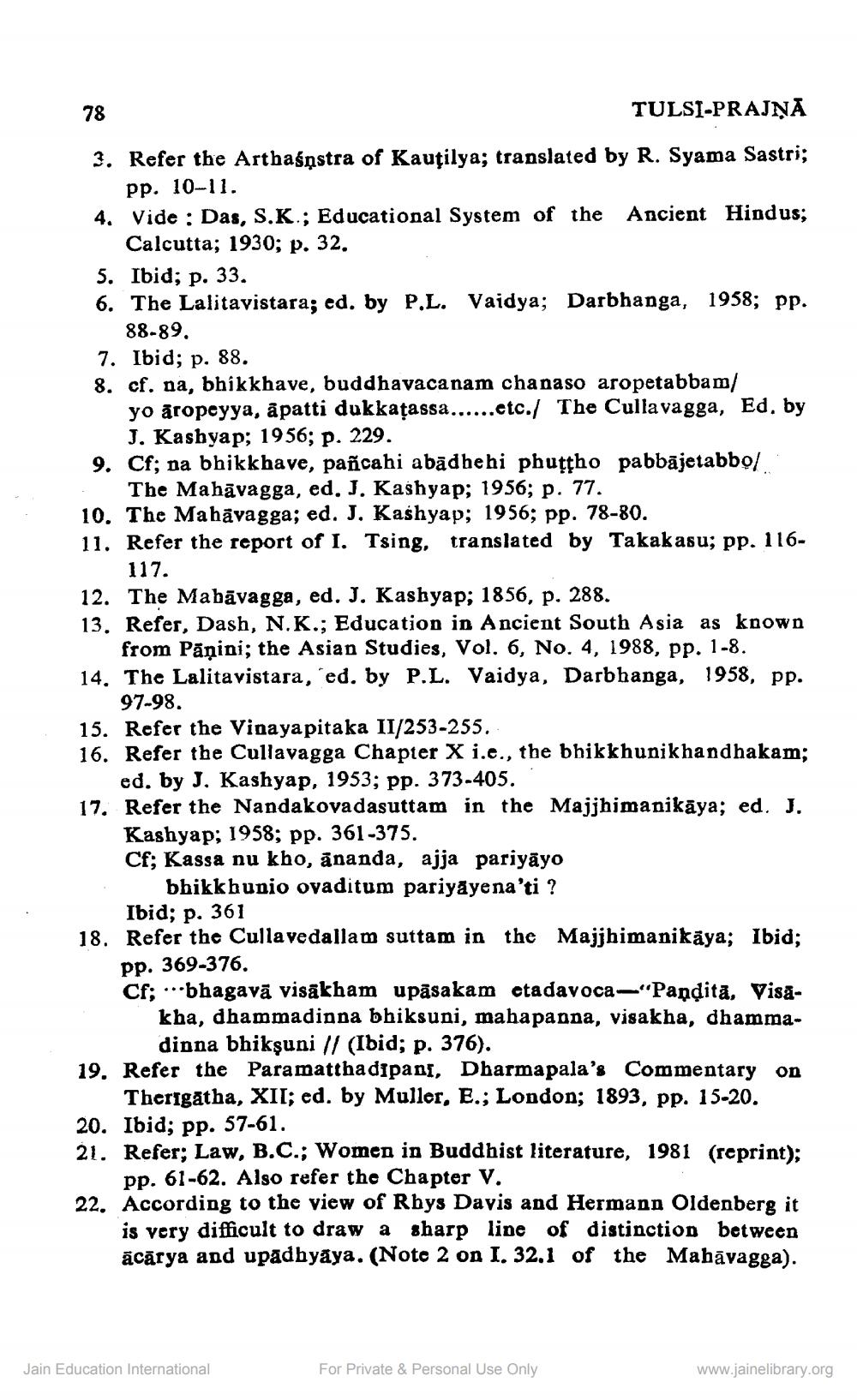________________
8
TULSI-PRAJŅA 3. Refer the Arthaśņstra of Kautilya; translated by R. Syama Sastri;
pp. 10–11. 4. Vide : Das, S.K.; Educational System of the Ancient Hindus;
Calcutta; 1930; p. 32. 5. Ibid; p. 33. 6. The Lalitavistara; ed. by P.L. Vaidya; Darbhanga, 1958; pp.
88-89. 7. Ibid; p. 88. 8. cf. na, bhikkhave, buddhavacanam chanaso aropetabbam/
yo aropeyya, åpatti dukkațassa......etc./ The Cullavagga, Ed, by
J. Kashyap; 1956; p. 229. 9. Cf; na bhikkhave, pañcahi abadhehi phuttho pabbajetabb0/
The Mahāvagga, ed. J. Kashyap; 1956; p. 77. 10. The Mahāvagga; ed. J. Kashyap; 1956; pp. 78-80. 11. Refer the report of I. Tsing, translated by Takakasu; pp. 116
117. 12. The Mabāvagga, ed. J. Kashyap: 1856, p. 288. 13. Refer, Dash, N.K.; Education in Ancient South Asia as known
from Pāņini; the Asian Studies, Vol. 6, No. 4, 1988, pp. 1-8. 14. The Lalita vistara, ed. by P.L. Vaidya, Darbhanga, 1958, pp.
97-98. 15. Refer the Vinayapitaka II/253-255. 16. Refer the Cullavagga Chapter X i.e., the bhikkhunikhandhakam;
ed. by J. Kashyap, 1953; pp. 373.405. 17. Refer the Nandakovadasuttam in the Majjhimanikāya; ed. J.
Kashyap; 1958; pp. 361-375. Cf; Kassa nu kho, ananda, ajja pariyāyo
bhikkhunio ovaditum pariyāyena'ti ? Ibid; p. 361 18. Refer the Cullavedallam suttam in the Majjhimanikāya; Ibid;
pp. 369-376. Cf; .--bhagavā visakham upāsakam etadavoca- Pandita. Visa
kha, dhammadinna bhiksuni, mahapanna, visakha, dhamma
dinna bhikṣuni // (Ibid; p. 376). 19. Refer the Paramatthadipani, Dharmapala's Commentary on
Therigātha, XII; ed. by Muller, E.; London; 1893, pp. 15-20. 20. Ibid; pp. 57-61. 21. Refer; Law, B.C.; Women in Buddhist literature, 1981 (reprint);
pp. 61-62. Also refer the Chapter V. 22. According to the view of Rhys Davis and Hermann Oldenberg it
is very difficult to draw a sharp line of distinction between ācārya and upadhyaya. (Note 2 on I. 32.1 of the Mahāvagga).
Jain Education International
For Private & Personal Use Only
www.jainelibrary.org




